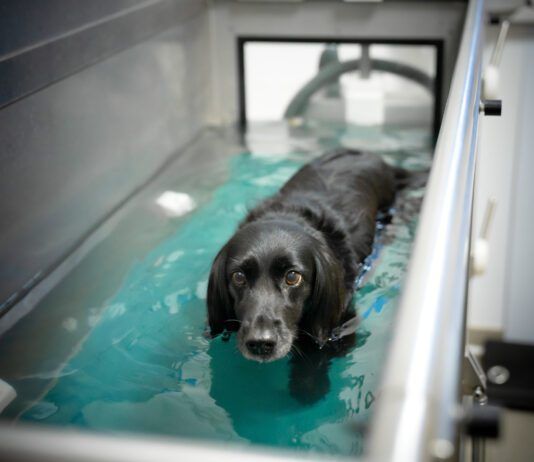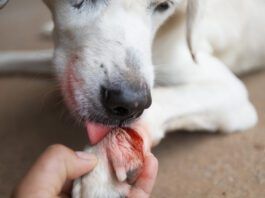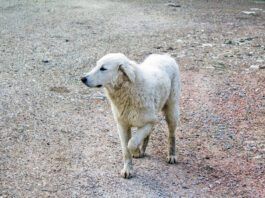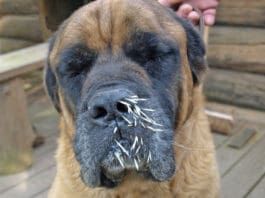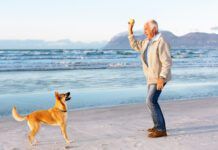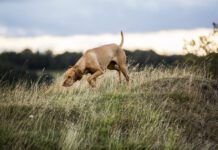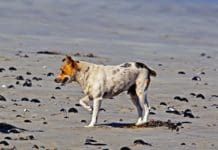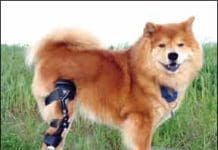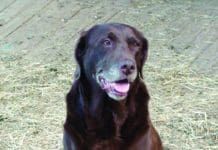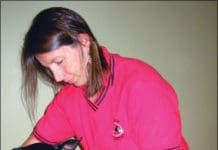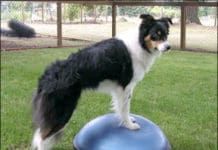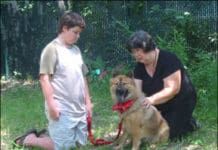Braces for Dogs with a Torn ACL
The signs of an acute ACL rupture are quite classic. Usually, the dog is running and playing and suddenly gives a yelp and becomes completely non-weight bearing on a hind leg. You may wonder if you can use an ACL dog brace and give your dog reasonable comfort and care.
Dog Nosebleed
Nosebleeds in a dog have many possible causes, just as they do in people. Some nosebleeds are simple: A dog nose bleeding on only...
Safe Flowers for Dogs
Many flowers and house plants are toxic for dogs. Calla lilies, jade plants, poinsettia, and mistletoe are just a few. Most toxic plants cause vomiting, diarrhea, and/or lethargy, but some can even be fatal when eaten in large quantities.
Dog Limping: Possible Causes and Treatments
Dogs are usually active, enthusiastic household members, and as a result, they are prone to injuries. These can range from muscle strains to broken bones to systemic infections. When your dog is limping it's time to consult with a veterinarian. They may have you rest your dog and monitor at home for 24 - 48 hours depending on the severity of the problem. If the limp doesn't improve or worsens, they will likely have you come in for an appointment.
Dog Paw Cuts and Scrapes: How to Treat a Paw Injury
Your dog's paw pads act much like the soles of sneakers, protecting your dog's foot and cushioning each step. Paw pads are tough, but they can still be cut by sharp objects or worn off if your dog runs hard on rough terrain. What should you do when your dog cuts or tears a pad?
Preventing Exercise Injury for Your Dog by Warming Up and Cooling Down
Professional human athletes never skip a proper warmup. That's because research has proven, repeatedly, that preparing your muscles for upcoming physical activity reduces the risk of physical injury. And for them, an injury could impact their wallet with down time.
How to Prevent Injury to Your Exuberantly Active Dog
the dog's diagonal pairs of legs move together at the trot. Take note if your dog suddenly starts pacing; it can indicate that he's trying to find a gait that reduces muscle or joint pain. Be aware
Jean Donaldson’s Prep Training for Orthopedic Brace Casting
The following protocol was written with a specific process in mind: preparing a dog to happily hold still long enough to make a cast of the dog’s leg (needed for making a custom-fit mobility brace). But with a little imagination, you can customize Donaldson’s protocol to train your dog to accept any equipment. You will need 1) Glad Press ‘n Seal Wrap; 2) a roll of gauze; 3) a measuring tape; 4) six jars of meat baby food; 5) your dog’s normal ration for one meal (to be hand-fed); 6) six days lead time before your casting day. Plan on spending about 5 minutes per day in place of one of your dog’s meals; don’t cram multiple sessions into one day.
Alternatives to Surgery for Ligament Injuries in Dogs
Dogs go lame for all kinds of reasons. Arthritis, Lyme disease, paw injuries, muscle sprains, bee stings, interdigital dermatitis, and dislocated kneecaps can make any dog limp. But when an active dog suddenly can't put weight on a hind leg, the most common diagnosis for more than a million American dogs every year is a torn cruciate ligament. In 2003, according to the Journal of the American Veterinary Medical Association, the cost of treating those injuries exceeded $1.32 billion, and the price tag keeps rising. The most common prescription for canine knee injuries is surgery. Unfortunately, operations don't always work and some patients, because of age or other conditions, are not good candidates. In recent years a nonsurgical approach called conservative management" has helped thousands of dogs recover from ligament injuries
The Benefits of Rehabilitation Therapy for Dogs
About a decade ago, my then-young Bouvier, Jolie, had surgery to repair a herniated disc. From reading Whole Dog Journal, I was vaguely aware that veterinary physical therapy or rehabilitation existed; these specialties were mentioned in Recovery From a Fetch Injury" in the August 1999 issue
Canine Sports and Proper Canine Injury Prevention Through Conditioning
Today's explosion of canine sports has made sports medicine a veterinary specialty. But, says Carol Helfer, DVM, at Canine Peak Performance Sports Medicine & Physical Rehabilitation Center in Portland, Oregon, competing dogs are prone to injury not because their sports are inherently dangerous but because canine athletes seldom receive the conditioning training that keeps them strong, balanced, and coordinated. The whole notion of injury prevention through proper conditioning is one that is just beginning to gather attention,h explains Dr. Helfer. What I love about this work is that a few simple exercises can dramatically change a dog's quality of life. In athletic dogs, the proof is in their continued good health, enhanced performance, and absence of injuries. Elderly and sedentary dogs benefit, too, and they quickly show increased range of motion and a renewed enthusiasm for activities."
Frequently Used Canine Healing Methods for Injured Dogs
We call it the spark of life for good reason. From birth to death, all living creatures generate and transmit energy. Entire healing therapies, some of them thousands of years old, have been built around energy. Once dismissed by Western science as impossible or ridiculous – and still viewed with suspicion by conventional physicians and veterinarians – energy medicine is slowly gaining acceptance in the United States. Several energy therapies are taught in American universities or are used by a growing number of healthcare practitioners. Can energy therapies help your dog? The descriptions and resources provided here may help you decide.


